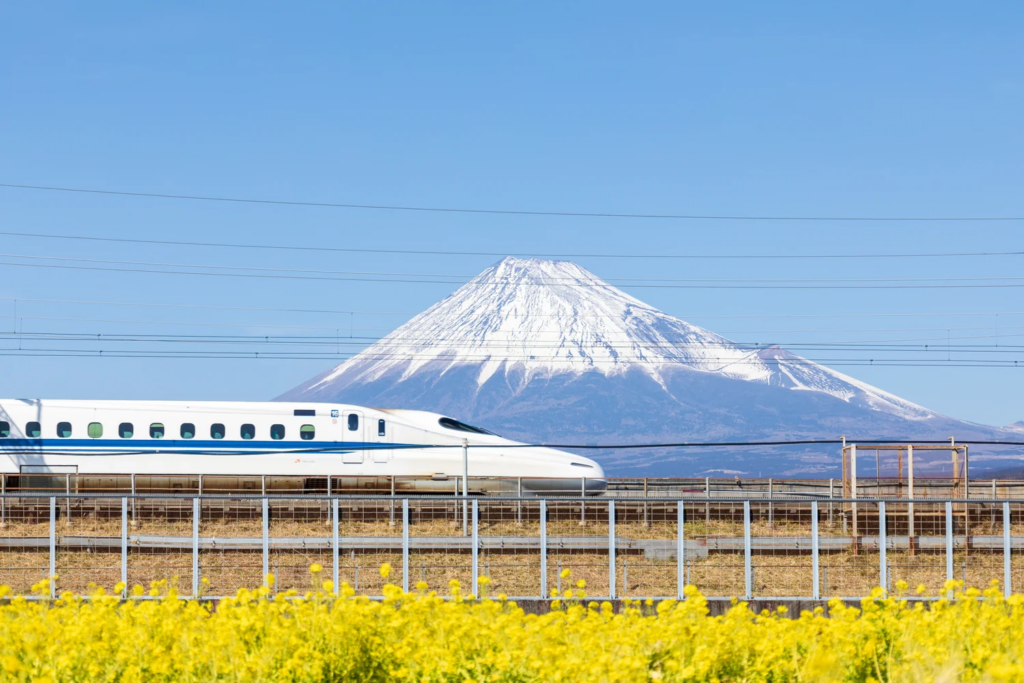Transportation Tips in Japan: How to Get Around Efficiently
🚀 Japan’s Transportation System: Convenient & Efficient
Japan boasts one of the world’s most reliable and efficient transportation networks, making it easy to travel across the country. Whether you’re journeying between cities or exploring local areas, there are multiple transportation options available to suit your needs.

🔹 Main Ways to Get Around Japan
There are several convenient and efficient transportation options available, catering to different travel needs and distances.
✔ Shinkansen (Bullet Trains) – Fastest way to travel long distances between cities.
✔ Local & Private Railways – Connect smaller cities and suburban areas.
✔ Metro & Subway – Best for navigating major cities.
✔ Buses – Ideal for areas with limited train access.
✔ Taxis & Ride-Sharing – Convenient but more expensive.
✔ Car Rentals – Best for rural areas and scenic drives.
🚆 Now, let’s go over how each transport system works!
🚄 Shinkansen (Bullet Trains) – The Fastest Way to Travel
Japan’s famous Shinkansen (bullet trains) connect major cities across the country with speeds up to 320 km/h. They offer comfortable seating, punctual departures, and smooth rides, making them the best option for long-distance travel.
🔹 Key Points:
🕒 Trains depart frequently and are almost always on time.
🚅 Operated by Japan Railways (JR), covering most major destinations.
💺 Comfortable seating, reserved & non-reserved options available.
💰 Shinkansen tickets can be expensive, but the JR Pass offers great savings for tourists.

🚆 Local & Private Railways – Connecting Smaller Cities
In addition to the JR network, Japan has many private railway companies operating in cities and regions. These railways help connect smaller cities, towns, and sightseeing destinations not covered by the Shinkansen.
🔹 Key Points:
- 🚉 70% of Japan’s train network is JR-operated, while private railways cover local routes.
- 🌍 Some private lines serve tourist areas, such as the Odakyu Line to Hakone.
- 🎫 JR Pass does not cover private railways—you’ll need separate tickets or IC cards.
- ⏳ Trains in rural areas may have fewer departures than city trains.

🚇 Metro & Subway – Best for Getting Around Cities
Japan’s major cities have extensive metro and subway networks, making them one of the most efficient and affordable ways to travel within urban areas.
🔹 Key Points:
- 🚊 Tokyo, Osaka, and other big cities have multiple subway lines.
- 🔄 Some lines are run by different companies, so transfers may require separate tickets.
- 💳 IC cards (Suica, Pasmo, Icoca, etc.) allow easy travel across most metro systems.
- ⏳ Trains run frequently, but can be crowded during rush hours.
🚌 Buses – Great for Areas with Fewer Trains
Buses play a key role in cities where train systems are limited, such as Kyoto and Nara. They are also useful for rural and mountainous regions where trains do not reach.
🔹 Key Points:
- 🏙 City buses are commonly used in places like Kyoto, where train access is limited.
- 🛣 Highway buses connect cities at a lower price than the Shinkansen.
- 💳 Most buses accept IC cards, but some require exact change for cash payments.
- ⏳ Buses can be slower due to traffic but are useful for reaching specific tourist spots.

🚖 Taxis & Ride-Sharing – Convenient but Expensive
Taxis are widely available and very reliable, but they are also one of the most expensive options for transportation in Japan. Ride-sharing services like Uber and DiDi are available but are not as commonly used as in other countries.
🔹 Key Points:
- 🚕 Taxi fares start at ¥500-¥700 and increase based on distance.
- 🚪 Taxi doors open and close automatically—no need to touch them!
- 🚗 Ride-sharing is limited, with most services using licensed taxis instead of private drivers.
- 🏙 Best for short trips, late-night travel, or areas with limited public transport.

🚗 Car Rentals – Ideal for Rural & Scenic Routes
If you’re traveling to rural areas like Hokkaido, the Japanese Alps, or Okinawa, renting a car may be the best option. It gives flexibility to explore places with fewer public transport options.
🔹 Key Points:
- 🚘 Foreign travelers need an International Driving Permit (IDP) to rent a car.
- 🛣 Japan has many toll roads, which can increase travel costs.
- 🏔 Scenic areas and countryside locations are best explored by car.
- 🚦 Japan drives on the left side of the road, similar to the UK.
💳 Payment Methods for Public Transport
Japan’s transport system is highly digitized, making it easy to pay for rides.
🔹 IC Cards (Suica, Pasmo, Icoca, etc.)
💳 Prepaid smart cards that work on trains, buses, and even taxis.
🏪 Can be used for shopping at vending machines, convenience stores, and restaurants.
🛒 Available for purchase at train stations and convenience stores.
👉 For more details on how to get your IC card and use it across Japan, see here: IC Cards – Everything You Need to Know.
🔹 Transport Passes for Tourists
🎫 Japan Rail Pass (JR Pass) – Unlimited JR travel for a fixed period.
🗼 Tokyo Subway Pass – 24, 48, or 72-hour unlimited subway travel.
🚉 Regional Rail & Bus Passes – Available for areas like Kansai, Hokkaido, and Kyushu.
👉 For more details on JR Passes and other travel passes, visit here.

✅ Summary: Choosing the Best Transport for Your Trip
| Travel Type | Best Option |
|---|---|
| Long distances (city to city) | 🚄 Shinkansen & JR Pass |
| Regional travel | 🚆 Local JR trains & Private Railways |
| City travel | 🚇 Metro & IC cards |
| Areas with fewer trains | 🚌 Buses & Taxis |
| Rural & scenic routes | 🚗 Rental Cars |
| Late-night travel | 🚖 Taxis |
🚀 Plan your perfect Japan trip with our full transportation guide here.